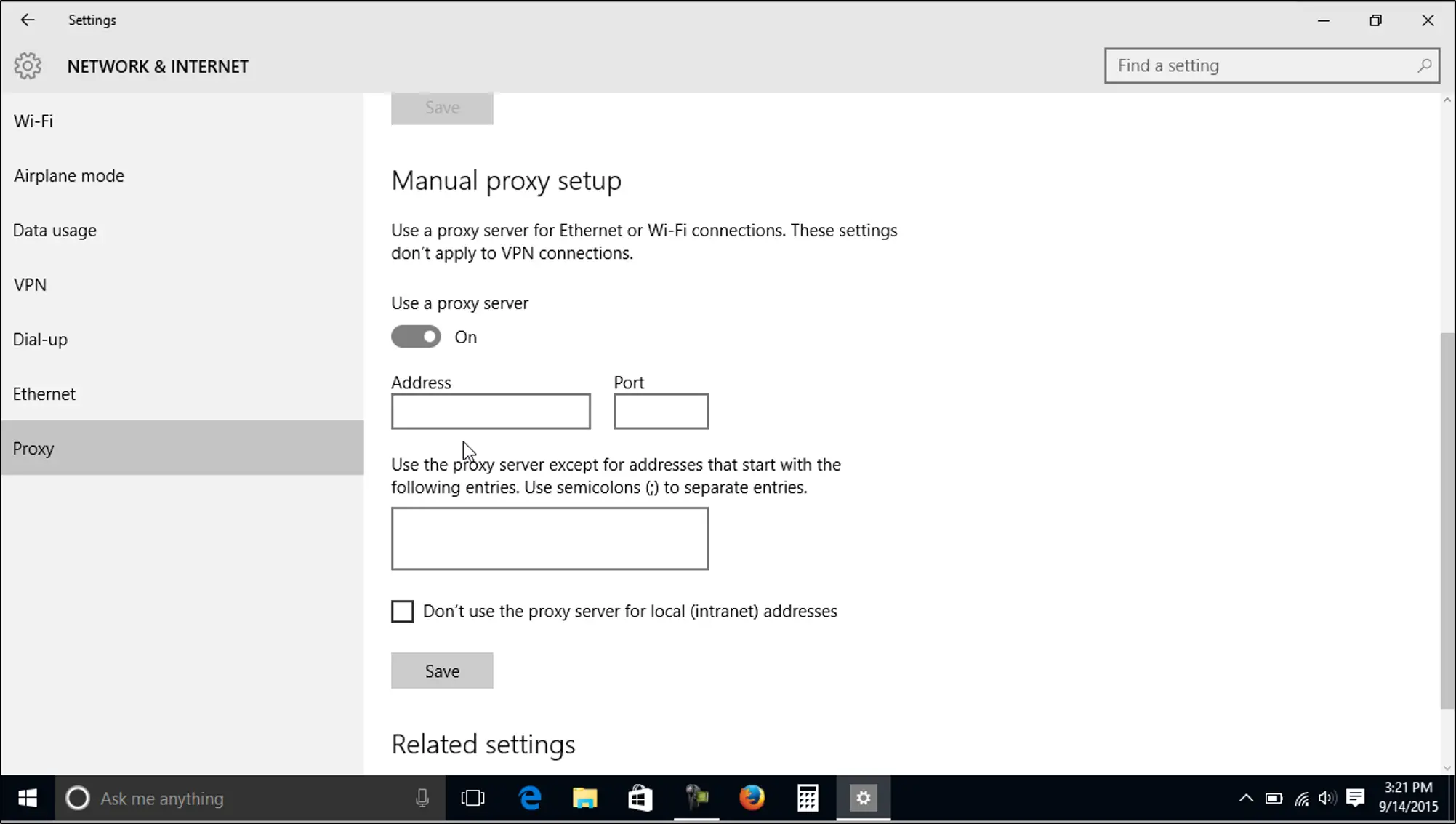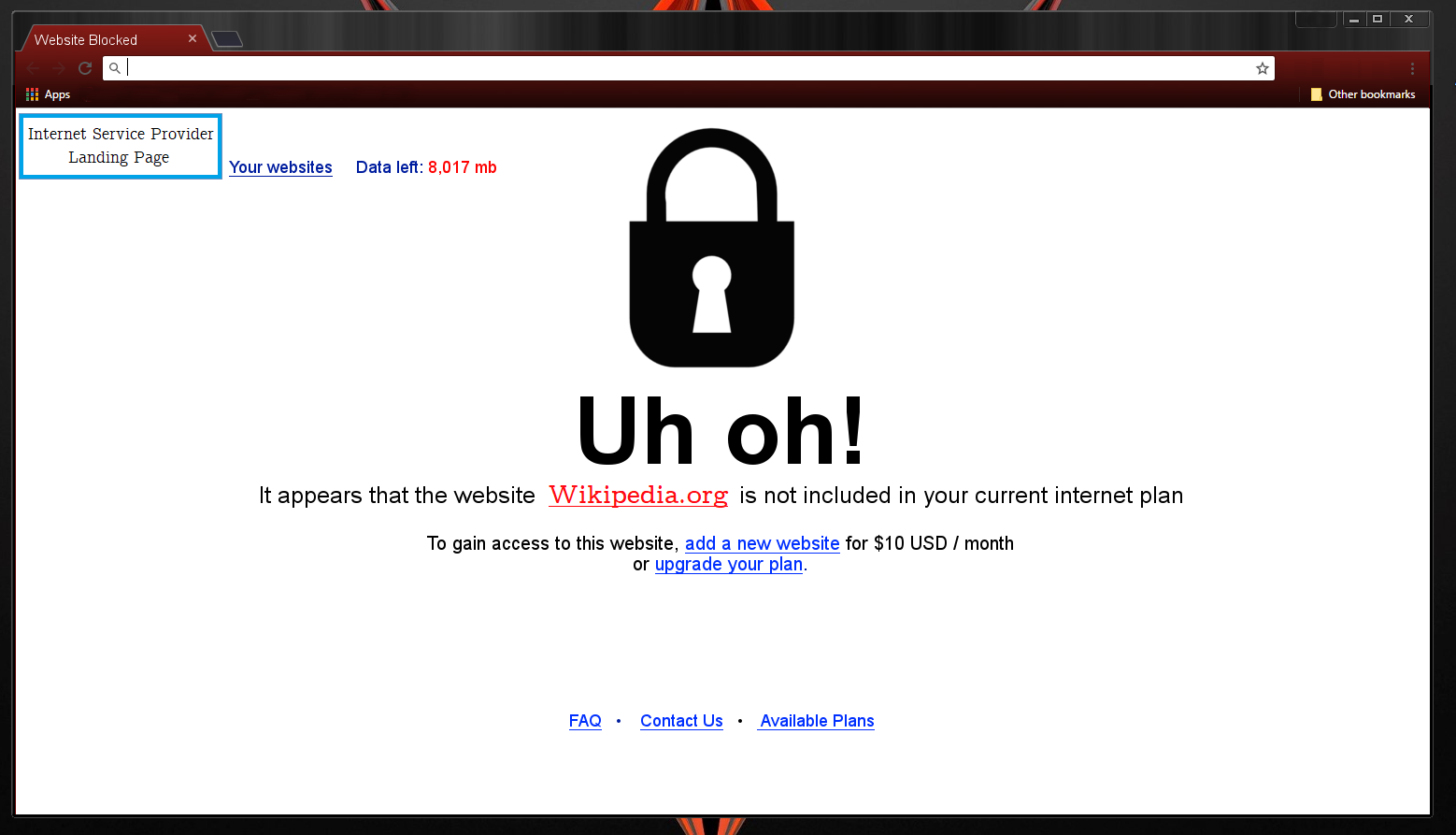Why is the Proxy Server Not Working?
The proxy server acts as an intermediary between your device and the internet, playing a crucial role in handling and managing requests and responses. However, there may be instances when the proxy server stops working, causing frustration and hindering your internet access. Understanding the reasons behind this issue can help you troubleshoot and resolve it effectively.
One common reason for the proxy server not working is a problem with your internet connection. If your connection is unstable or disrupted, it can prevent the proxy server from functioning correctly. This can occur due to issues with your modem, router, or ISP. Checking your internet connection and ensuring its stability is a crucial first step in troubleshooting the proxy server problem.
Another reason for the proxy server malfunctioning could be incorrect or misconfigured proxy server settings. If the settings are not properly configured or contain errors, it can prevent the server from functioning as intended. Clearing the proxy server settings and reconfiguring them can help resolve this issue.
Proxy server settings can also be disabled or modified in specific web browsers, causing them to stop working. These settings can be adjusted in popular browsers such as Internet Explorer, Google Chrome, and Mozilla Firefox. Disabling these settings or reconfiguring them correctly can help restore the functionality of the proxy server.
Restarting your computer is another simple yet effective troubleshooting step. Sometimes, a simple restart can resolve underlying issues that may be causing the proxy server to malfunction. Restarting your computer can refresh the system and clear any temporary glitches, helping in resolving the problem.
Updating your proxy server settings can also play a significant role in fixing the issue. Proxy servers often require updates to their settings to cope with changing network environments. Keeping your proxy server settings up-to-date can help ensure its proper functioning and prevent any disruptions.
If all else fails, resetting your proxy server to default settings may be necessary. This action will restore the server to its original configuration, eliminating any misconfigurations or errors that may be causing the issue. However, this step should be approached with caution, as it may require assistance from a network administrator or IT professional.
Remember, troubleshooting the proxy server issue may vary depending on your specific system and network setup. If you’re unable to resolve the problem on your own, contacting your network administrator or IT support can provide further assistance in rectifying the proxy server’s functionality.
Checking your Internet Connection
When encountering issues with a proxy server, the first step is to ensure your internet connection is stable and working correctly. A weak or disrupted connection can potentially prevent the proxy server from functioning properly. Follow these steps to check your internet connection:
1. Restart your modem and router: Sometimes, connectivity problems can be resolved by simply restarting the modem and router. Power them off, wait for a few seconds, and then turn them on again. This can help refresh the network connection and resolve any temporary glitches.
2. Check other devices: Determine if the issue is specific to your device or affecting multiple devices. Try accessing the internet on other devices, such as smartphones or tablets, to see if they are experiencing any connectivity problems. If all devices are affected, the issue may be with your internet service provider (ISP) or network setup.
3. Ensure physical connections: Check all physical connections between your modem, router, and computer. Make sure all cables are securely plugged in and that there are no loose connections. Sometimes, a simple loose cable can disrupt the internet connection.
4. Test using a different web browser: If you’re encountering issues with a specific web browser, try using a different one to see if the problem persists. This can help determine if the issue is related to the browser itself or the general network connectivity.
5. Check for any service outages: Visit your ISP’s website or get in touch with their customer support to check for any reported service outages in your area. It’s possible that the proxy server issue is the result of an external problem that requires the ISP’s attention.
6. Run a network diagnostic tool: Most operating systems have built-in network diagnostic tools that can help identify network connectivity issues. These tools can troubleshoot and provide suggestions for resolving internet connection problems.
By following these steps, you can check the status of your internet connection and determine whether it is the root cause of the proxy server issue. If your internet connection is stable and functioning correctly, move on to the next troubleshooting step to address the proxy server settings.
Clearing Proxy Server Settings
Clearing the proxy server settings is a common troubleshooting step when encountering issues with the proxy server. Sometimes, incorrect or misconfigured settings can prevent the server from functioning properly. Here’s how you can clear the proxy server settings in different web browsers:
1. Disabling Proxy Server Settings in Internet Explorer:
– Open Internet Explorer and go to the “Tools” menu.
– Select “Internet Options” and navigate to the “Connections” tab.
– Click on the “LAN settings” button.
– In the “Proxy server” section, make sure the “Use a proxy server for your LAN” option is unchecked.
– Click “OK” to save the changes and exit the settings menu.
2. Disabling Proxy Server Settings in Google Chrome:
– Open Google Chrome and click on the three-dot menu icon.
– Go to “Settings” and scroll down to click on “Advanced.”
– Under the “System” section, click on “Open your computer’s proxy settings.”
– In the “Connections” tab of the Internet Properties window, click on the “LAN settings” button.
– Uncheck the box that says “Use a proxy server for your LAN.”
– Click “OK” to save the changes and close the settings window.
3. Disabling Proxy Server Settings in Mozilla Firefox:
– Launch Mozilla Firefox and click on the three-line menu icon.
– Go to “Options” and click on “Preferences.”
– In the left-hand menu, select “General” and scroll down to the “Network Settings” section.
– Click on the “Settings” button.
– Ensure the “Use system proxy settings” option is selected or choose “No proxy” if it is currently set differently.
– Click “OK” to save the changes and exit the preferences menu.
By clearing the proxy server settings, you are removing any potentially incorrect or misconfigured configurations that may be causing the issue. Once completed, restart your browser and test the internet connection to check if the proxy server is now functioning properly.
If clearing the proxy server settings doesn’t resolve the issue, further troubleshooting steps such as restarting your computer or updating the proxy server settings may be necessary.
Disabling Proxy Server Settings in Internet Explorer
If you are experiencing issues with your proxy server in Internet Explorer, disabling the proxy server settings can help troubleshoot and resolve the problem. Here’s a step-by-step guide on how to disable proxy server settings in Internet Explorer:
1. Open Internet Explorer and click on the gear icon located in the top-right corner of the browser window. This will open the “Tools” menu.
2. From the drop-down menu, select “Internet Options.” This will open the Internet Options window.
3. In the Internet Options window, navigate to the “Connections” tab. You will find it at the top of the window.
4. In the Connections tab, click on the “LAN settings” button. This will open the Local Area Network (LAN) Settings window.
5. In the LAN Settings window, you will find a section titled “Proxy server.” Under this section, there will be a checkbox for “Use a proxy server for your LAN.” Make sure this checkbox is unchecked.
6. Once you have unchecked the “Use a proxy server for your LAN” checkbox, click on the “OK” button to save the changes and exit the LAN Settings window.
7. Finally, click on the “OK” button in the Internet Options window to close it.
By following these steps, you will have successfully disabled the proxy server settings in Internet Explorer. This will allow your browser to connect directly to websites without going through a proxy server.
It’s important to note that disabling the proxy server settings in Internet Explorer may affect other applications or services that rely on proxy servers. If you encounter any issues with other applications, you may need to re-enable the proxy server settings or configure them appropriately.
After disabling the proxy server settings, it’s recommended to restart your computer and test your internet connection to check if the proxy server issue has been resolved. If the problem persists, you may need to further troubleshoot or seek assistance from a network administrator or IT support professional.
Disabling Proxy Server Settings in Google Chrome
If you’re encountering issues with your proxy server in Google Chrome, disabling the proxy server settings can help resolve the problem. Follow the step-by-step guide below to disable proxy server settings in Google Chrome:
1. Launch Google Chrome and click on the three-dot menu icon located in the top-right corner of the browser window. This will open a drop-down menu.
2. From the drop-down menu, select “Settings.” This will open the Settings page in a new tab.
3. Scroll down to the bottom of the Settings page and click on the “Advanced” option. It will expand to reveal additional settings.
4. Under the “System” section, click on “Open your computer’s proxy settings.” This will open the Proxy settings in the Control Panel for your operating system.
5. In the Internet Properties window that opens, navigate to the “Connections” tab. You will find it at the top of the window.
6. In the Connections tab, click on the “LAN settings” button. This will open the Local Area Network (LAN) Settings window.
7. In the LAN Settings window, you will see a section titled “Proxy server.” Uncheck the box that says “Use a proxy server for your LAN.”
8. Click “OK” to save the changes and close the LAN Settings window.
9. Click “OK” again to save the changes and close the Internet Properties window.
10. Finally, close the Settings tab in Google Chrome.
By following these steps, you have successfully disabled the proxy server settings in Google Chrome. This will allow your browser to connect directly to websites without going through a proxy server.
Please note that disabling proxy server settings in Google Chrome may affect other applications or services that rely on proxy servers. If you encounter any issues with other applications, you may need to re-enable the proxy server settings or configure them appropriately.
After disabling the proxy server settings, it’s recommended to restart your computer and test your internet connection to check if the proxy server issue has been resolved. If the problem persists, you may need to further troubleshoot or seek assistance from a network administrator or IT support professional.
Disabling Proxy Server Settings in Mozilla Firefox
If you’re facing issues with the proxy server in Mozilla Firefox, disabling the proxy server settings can help resolve the problem. Here’s a step-by-step guide on how to disable proxy server settings in Mozilla Firefox:
1. Launch Mozilla Firefox and click on the three-line menu icon located at the top-right corner of the browser window. This will open a menu.
2. From the menu, select “Options.” This will open the Firefox Options page in a new tab.
3. In the left-hand menu of the Firefox Options page, select “General.”
4. Scroll down to the “Network Settings” section, and click on the “Settings” button. This will open the Connection Settings window.
5. In the Connection Settings window, you will find three options for configuring the proxy server:
– “No proxy”: Select this option if it’s not already selected, which means Firefox will directly connect to the internet without using a proxy server.
– “Auto-detect proxy settings for this network”: This option allows Firefox to automatically detect and configure proxy settings based on your network.
– “Use system proxy settings”: This option uses the proxy settings defined in your operating system. Make sure this option is selected if you don’t want to use a proxy server in Firefox.
6. After selecting the appropriate option, click on the “OK” button to save the changes and close the Connection Settings window.
7. Finally, close the Firefox Options tab.
By following these steps, you have successfully disabled the proxy server settings in Mozilla Firefox. This will allow your browser to connect directly to websites without going through a proxy server.
Please note that disabling the proxy server settings in Firefox may affect other applications or services that rely on proxy servers. If you encounter any issues with other applications, you may need to re-enable the proxy server settings or configure them appropriately.
After disabling the proxy server settings, it’s recommended to restart your computer and test your internet connection to check if the proxy server issue has been resolved. If the problem persists, you may need to further troubleshoot or seek assistance from a network administrator or IT support professional.
Restarting Your Computer
Sometimes, a simple restart of your computer can resolve issues with the proxy server. Restarting your computer can help refresh the system and clear any temporary glitches that may be affecting the functionality of the server. Here’s how you can restart your computer:
1. Close any open applications or programs on your computer.
2. Click on the “Start” button located in the bottom-left corner of your screen.
3. From the Start menu, select the “Power” option.
4. In the power options menu, choose “Restart.”
Allow your computer to shut down and restart completely. Once it has restarted, test your internet connection and check if the proxy server is now working correctly.
Restarting your computer not only refreshes the system but also resets any network connections and clears cached data. This can help resolve any underlying issues that may be affecting the functionality of the proxy server.
If restarting your computer does not fix the proxy server problem, you may need to move on to other troubleshooting steps such as updating your proxy server settings or resetting the proxy server, if applicable.
It’s also worth mentioning that regular restarting of your computer can help prevent issues and ensure optimal performance. Over time, computers can accumulate temporary files and processes, which can impact system performance. Restarting your computer periodically can help clear these temporary files and restore optimal performance.
Remember, if the proxy server issue persists even after restarting your computer, it may be necessary to seek further assistance from a network administrator or IT support professional to help diagnose and resolve the problem.
Updating Your Proxy Server Settings
Updating your proxy server settings can play a significant role in resolving issues with the proxy server. Proxy servers often require updates to their settings to adapt to changing network environments. Here’s a step-by-step guide on how to update your proxy server settings:
1. Identify the proxy server settings: To update the proxy server settings, you need to know the correct configuration. This includes the proxy server address and port number. The settings can usually be obtained from your network administrator or IT support.
2. Open the network settings: Access the network settings on your device by navigating to the control panel or settings menu. The exact path may vary depending on your operating system.
3. Locate the proxy server settings: In the network settings, look for the section related to proxy server settings. The location and name of this section may differ depending on the operating system.
4. Update the proxy server address and port: Enter the correct proxy server address and port number provided to you by your network administrator or IT support. Double-check the accuracy of the information to ensure that it is entered correctly.
5. Save the changes: After updating the proxy server settings, save the changes and exit the network settings window. This will apply the new settings to your device.
6. Test the connection: Once the updated proxy server settings are saved, test your internet connection to check if the proxy server is functioning correctly. Try accessing different websites to ensure that you can connect without any issues.
Regularly updating your proxy server settings is essential to maintain a seamless and secure internet connection. Network environments can change, and new settings may become available to improve performance or address security concerns. By keeping your proxy server settings up-to-date, you can ensure that your connection remains stable and optimized.
If updating the proxy server settings does not resolve the issue, further troubleshooting steps such as resetting the proxy server or seeking assistance from a network administrator may be necessary.
Remember to consult with your network administrator or IT support team if you are unsure about updating the proxy server settings or if you require further assistance.
Resetting Your Proxy Server
In certain cases, resetting your proxy server to its default settings can help resolve issues that persist despite other troubleshooting efforts. Resetting the proxy server will restore it to its original configuration and eliminate any misconfigurations, errors, or conflicts that may be causing the problem. Here’s a step-by-step guide on how to reset your proxy server:
1. Access the proxy settings: To reset your proxy server, you need to access the proxy settings on your device. The exact path to these settings may vary depending on your operating system.
2. Locate the proxy server settings: Look for the section in the network settings or control panel that is specifically related to the proxy server.
3. Reset the proxy server settings: Within the proxy server settings, there should be an option or button to reset the settings to their default values. Click on this option to initiate the reset process.
4. Confirm the reset: A confirmation prompt may appear asking for confirmation before proceeding with the reset. Read the prompt carefully and confirm your intention to reset the proxy server.
5. Save the changes: After confirming the reset, save the changes and exit the proxy server settings. This will apply the default settings to your proxy server.
6. Restart your device: To ensure that the reset takes effect, restart your device. This will refresh the settings and clear any residual data related to the previous proxy server configuration.
7. Test the connection: Once the device restarts, test your internet connection to check if the proxy server is now working properly. Try accessing different websites to ensure that you can connect without any issues.
Resetting the proxy server should only be done when other troubleshooting steps have been exhausted. It is important to note that resetting the proxy server will revert all custom settings and configurations back to the default values. Therefore, it is advisable to make note of any custom settings beforehand, so they can be reconfigured if necessary.
If resetting the proxy server does not resolve the issue, it may be necessary to seek further assistance from a network administrator or IT support professional who can provide advanced troubleshooting steps or resolve underlying network issues.
Remember, the reset process may vary depending on your operating system and proxy server software. Consult appropriate documentation or IT support resources specific to your device and network setup for accurate and detailed instructions.
Contacting Your Network Administrator
If you have exhausted all troubleshooting options and are still unable to resolve the issue with your proxy server, it may be necessary to contact your network administrator. A network administrator is responsible for managing and maintaining the network infrastructure, including proxy servers. Here are the steps to take when contacting your network administrator:
1. Identify the network administrator: Determine who the network administrator is in your organization or network environment. This could be an IT department representative, a designated network administrator, or a system administrator.
2. Gather relevant information: Before reaching out to the network administrator, gather all relevant information about the issue you are experiencing with the proxy server. Make a note of any error messages, specific websites or applications that are not working, and any troubleshooting steps you have already taken. This will help the network administrator understand the problem more effectively and provide targeted assistance.
3. Contact the network administrator: Reach out to the network administrator via email, phone, or the designated communication channel established within your organization. Clearly explain the issue you are facing, providing as much detail as possible. Attach any relevant screenshots or error messages to help them diagnose the problem accurately.
4. Follow instructions and provide feedback: Once you have contacted the network administrator, they may provide instructions or request additional information to troubleshoot the proxy server issue. Follow their guidance closely and provide feedback on the results. This will aid in the troubleshooting process and help the network administrator identify potential solutions.
5. Be responsive and patient: Network administrators often handle multiple tasks and support requests simultaneously. Be patient and allow them sufficient time to investigate and resolve the issue. Respond promptly to any inquiries or requests for additional information to expedite the resolution process.
6. Seek escalation if necessary: If the network administrator is unable to resolve the issue or is unable to provide a solution within a reasonable time frame, you may need to seek escalation to higher-level support or involve other relevant personnel within your organization.
Remember, the network administrator possesses the expertise and knowledge to address complex issues with the proxy server. They can provide advanced troubleshooting steps, analyze network logs, and make any necessary configurations to restore proper functionality. Contacting the network administrator is essential when conventional troubleshooting methods fail to resolve the proxy server issue.

























